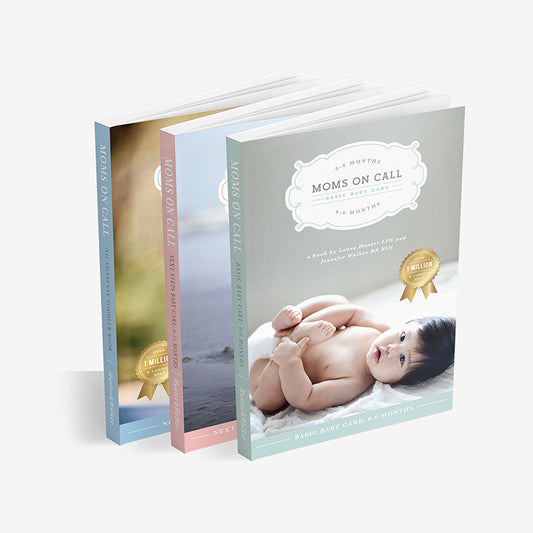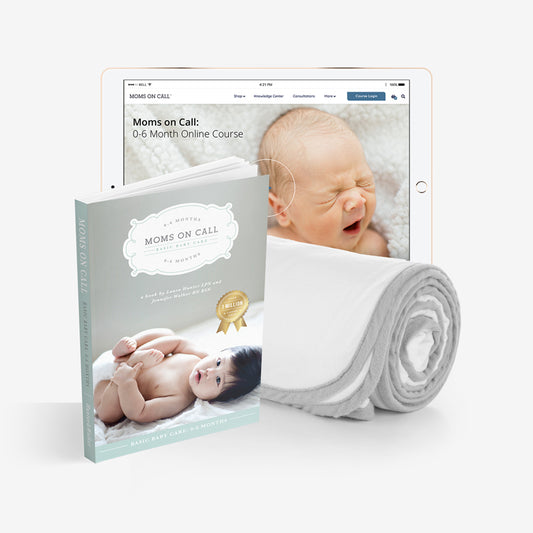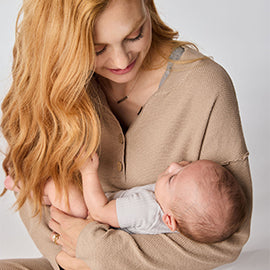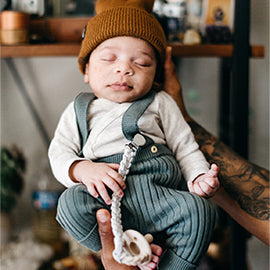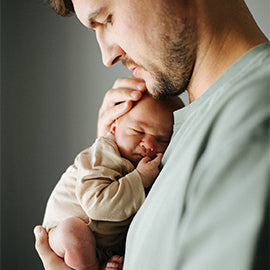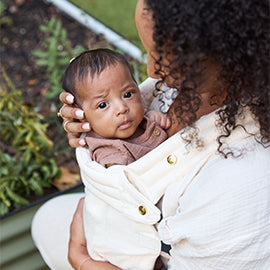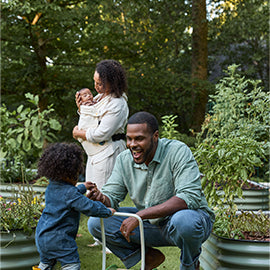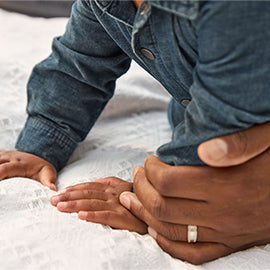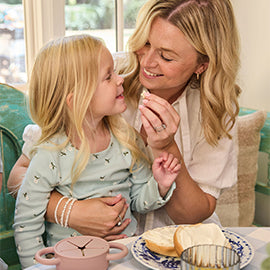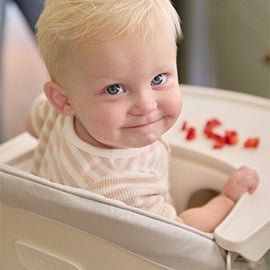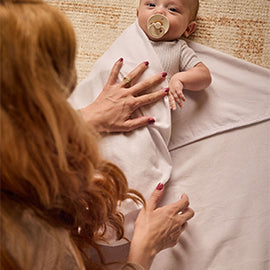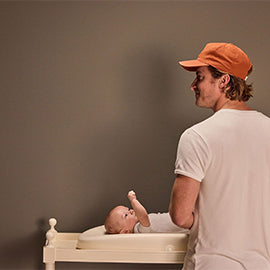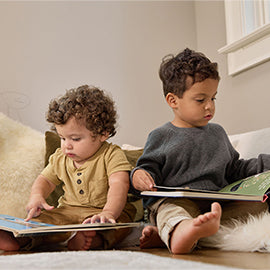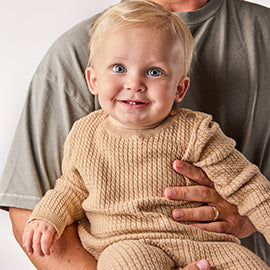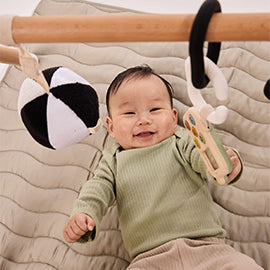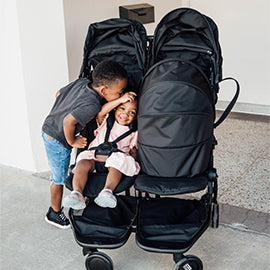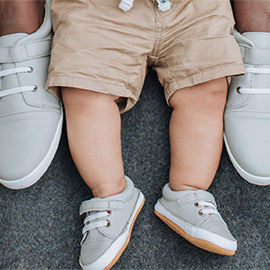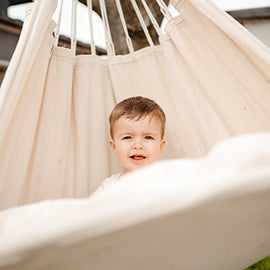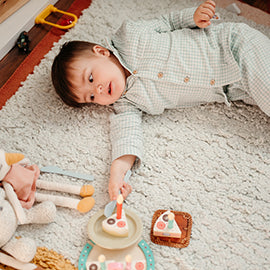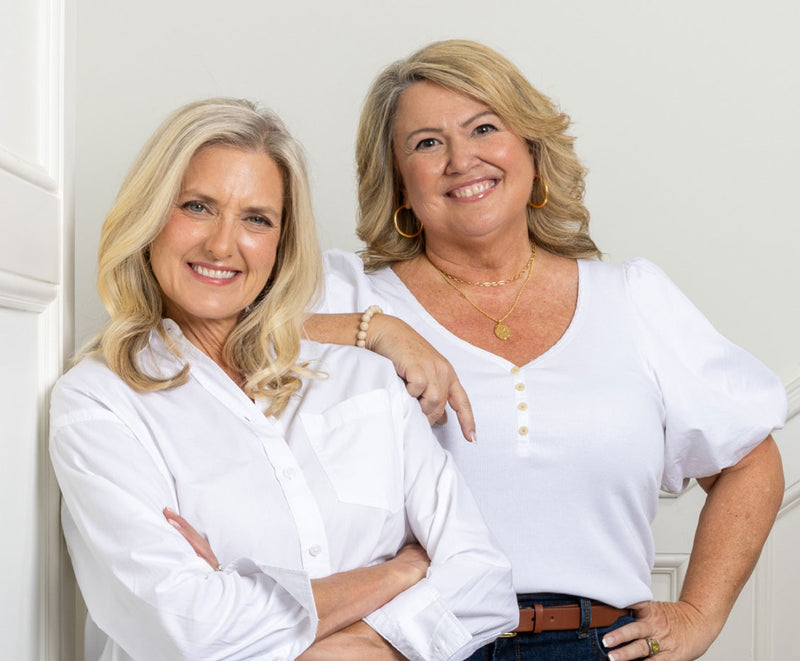In our most recent blog post "Music and Play: 6-15 Months", I spoke about how music can address motor, communication and cognitive skills. This still absolutely rings true for 15 month-4 year olds! There is an incredible amount of learning that occurs in these years and music is the perfect way to introduce new concepts and practice! I fully credit my ability to name all 50 states (in alphabetical order nonetheless) to the tune “Fifty Nifty United States.” Does anyone else remember learning that in elementary school?? Here are two original songs we want to share with you and your toddlers that can be used to continue working on those motor and cognitive skills!
Song Example - “Balance” - See video demonstration below for implementation ideas.
- This song has the opportunity to practice the fun skill of balancing an object in addition to body part identification and following directions.
Song Example - “All Right! Shake and Groove!” - See video demonstration below (Minute Marker 3:12) for implementation ideas.
- This song is a groovin’ movement tune guaranteed to help your energetic toddler dance some of that energy off! Each verse has a different movement direction (high-five, march, bounce, run, shake, dance) while also providing an opportunity to practice “left” and “right.”
MUSIC AND EMOTIONAL DEVELOPMENT:
Toddler years can sometimes get a bad reputation because of the big feelings known to come along with them. Not only are motor, communication, and cognitive skills developing, but toddlers also go through major emotional development.
As adults, we can usually identify our emotions and what’s causing them. We can communicate our needs to another person and have a conversation. Toddlers are having all of these feelings, but don’t necessarily have the processing skills that are needed to go along with them.
Here are a few ideas of how music may play a role in navigating the world of toddler emotions.
-
Listening and Drawing to Music
- Once toddlers are familiar with a few emotion words (happy, sad, angry, excited, etc.), combining music and art can be a wonderful way to bring those emotions to life. Since we want children to have a blank slate, I encourage using instrumental music for this activity. Choose a song to play and ask your child to draw a picture that they think goes along with the song. It could be scribbling with certain colors, abstract shapes, attempting to draw real images (depending on the age), etc. There is no wrong answer here. Here are some examples of how you can engage your toddler in a discussion:
- What emotion do you think this song sounds like? For younger toddlers, you can give more direct choices (Do you think this song sounds more happy or sad?).
- What color do you think sad sounds like?
- Tell me more about what you are drawing.
- What kind of story do you think is happening in this music?
- Do you think this song sounds more like a superhero flying or a baby who is sad?
- Here are some instrumental song examples that you can use for this activity:
- The Planets (Jupiter) -Gustav Holst
- The Planets (Mars) - Gustav Holst
- River Flows in You - Yiruma
- Carnival of Animals (Finale) - Camille Saint-Saëns
- Carnival of Animals (Aquarium) - Camille Saint-Saëns
- In the Hall of the Mountain King - Edvard Grieg
- Once toddlers are familiar with a few emotion words (happy, sad, angry, excited, etc.), combining music and art can be a wonderful way to bring those emotions to life. Since we want children to have a blank slate, I encourage using instrumental music for this activity. Choose a song to play and ask your child to draw a picture that they think goes along with the song. It could be scribbling with certain colors, abstract shapes, attempting to draw real images (depending on the age), etc. There is no wrong answer here. Here are some examples of how you can engage your toddler in a discussion:
-
Listening and Engaging in Pretend Play to Music
- Similar to drawing to music, acting out stories and engaging in pretend play to music can be another way to use that imagination.
- Grab some old clothes/props for dress-up and see what kind of story you can create to the music! The list of songs listed above can be used for this activity as well.
-
Emojis
- Emoji face images can be another fun tool to use to inspire some music and emotion practice! You can save a few emoji images on your phone or print them out. Grab some instruments (real ones or objects from around the house) and ask your toddler to play what each emotion would sound like.
- Would it be loud? Soft? Fast? Slow? How does a sad face sound? How does a mad face sound? How does a sleepy face sound?
- Emoji face images can be another fun tool to use to inspire some music and emotion practice! You can save a few emoji images on your phone or print them out. Grab some instruments (real ones or objects from around the house) and ask your toddler to play what each emotion would sound like.
-
Song Example - “Breathe”
- This song can be used to teach your child the coping skill of deep breathing in tough moments, while also giving them validation that you are right there with them! See video demonstration below (Minute Marker 4:34).
Songs to Engage Your Toddler from Metro Music Makers on Vimeo.
MUSIC AND FAMILY BONDING:
Music is one of those things that can be enjoyed individually or as a family. Here are some ideas for some family music activities that you can enjoy!
-
Family Dance Party
- This needs little explanation. Who doesn’t love a good dance party in the living room?? It’s amazing what music and dancing can do to create some really meaningful moments of connection.
-
Thunderstorm Challenge
- Think about all the different sounds that are heard in a thunderstorm (thunder, wind, rain, etc.).
- Challenge your toddler to find something around the house that could be used for the different sounds of a thunderstorm. Take turns playing the different “instruments” and practice going through some light rain, heavy rain, loud wind, quiet wind, etc. You could even bring in a flashlight for some lightning!
- If you have a little one that is frightened of thunderstorms, this can be a great way to help the sounds they hear seem a little less scary.
-
Mealtime Music
- During dinner, have each family member choose a favorite song to listen to and share it with the family. Ask why they chose that song today!
- Match your music to the meal! If it’s pasta night, find an “Italian Restaurant” playlist. If it’s taco night, find a “Mexican Restaurant” playlist. This is a great opportunity for conversations about the different cultures of the food we eat and the music of those cultures as well!
I hope this blog series has encouraged you to use music throughout your day with your child. I sincerely believe in the power of music to bring families together, to create moments of joy, to hold you in moments of sadness, to be a teaching tool, to help you lighten the mood when your toddler has just spilled an entire cup of milk on the floor and it’s time to clean up with a clean up song. One of my favorite quotes of all time is Hans Christian Anderson - “Where words fail, music speaks.” This can be applied to so many situations, but now having a child of my own entering into these formative toddler years, it takes on a new meaning. Happy music making!
“Balance,” “All Right! Shake and Groove” and “Breathe” are available for streaming on all digital music platforms here.

For more information about music lessons, music therapy, or customized song options for your little one at Metro Music Makers, please visit www.metromusicmakers.com.

